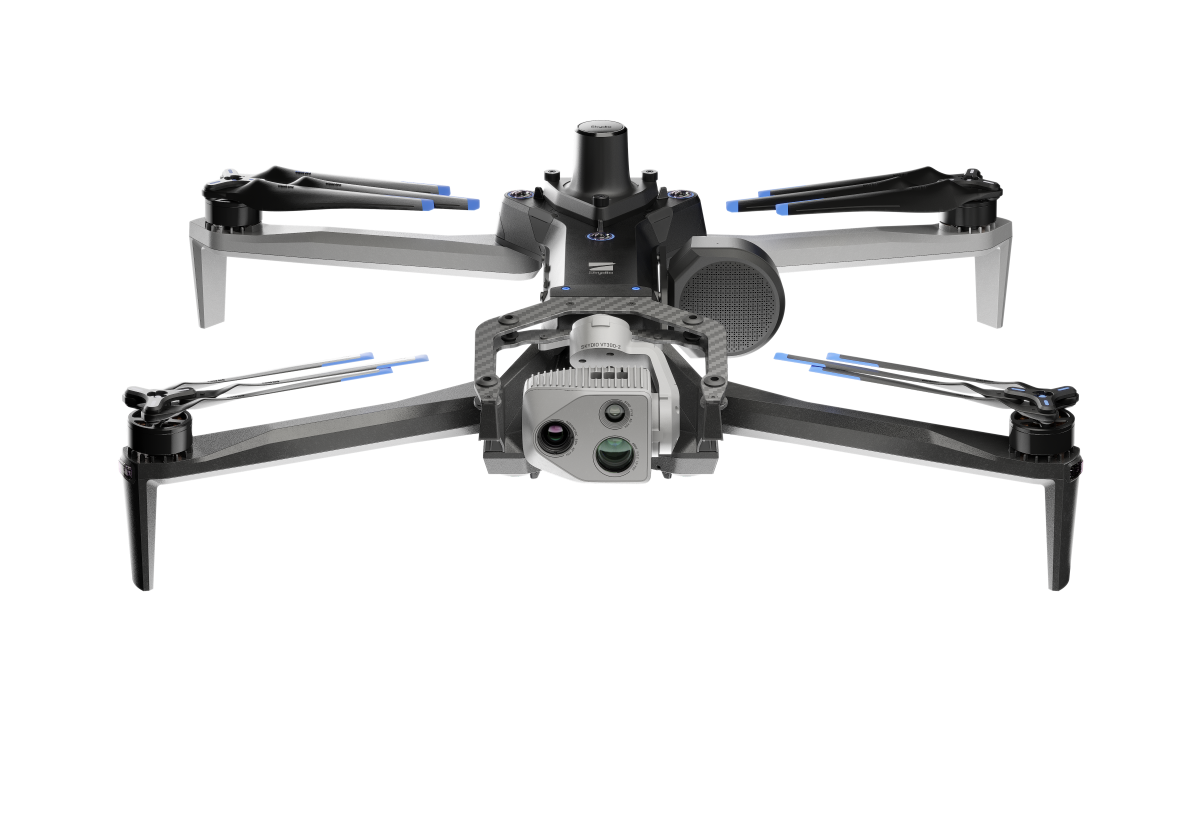
Skydio has unveiled its latest drone, the triple-camera X10 with an all-new NightSense feature that enables autonomous flights in zero-light environments. Designed as a versatile solution for enterprise and public safety applications, the X10 is Skydio’s first offering since exiting the consumer business earlier this year.
The new X10 essentially succeeds the Skydio X2 drone but is named so because it promises 10x improvements in its computing power compared to the previous generation. At the same time, the drone is equipped with 10x higher-fidelity navigation cameras that eliminate any and all blind spots, allowing the X10 to fly confidently even in GPS-denied or high EMI environments.
Further, a new Spatial AI engine enables real-time environment mapping and fully automated modeling at the edge. So, you can efficiently build 2D maps and 3D models onboard, in real-time.
But for those who have used the X2, perhaps the most exciting part is the NightSense sensor suite that powers AI autonomy at night. Skydio X10 is capable of using both visible and infrared illumination to avoid obstacles and understand its environment. And this is great because the drone can now be used for 24×7 operations.

Coming to data capture capabilities, the X10 features three custom-designed cameras. You get a 48MP zoom camera capable of reading license plates at 800 feet, and a 50MP wide field of view camera that can detect extremely minute details like 0.1 mm cracks in concrete. Skydio’s new solution is also the first drone ever to integrate the incredible FLIR Boson+ radiometric thermal sensor which can measure temperature differences during inspection missions or find a missing person in total darkness.
The X10’s airframe is open and modular, boasting four payload bays, replaceable gimbal sensor packages, and an IP55 weather resistance rating. Connectivity options are aplenty with a redesigned point-to-point link, a multiband radio designed for contested and jammed environments, and a 5G radio for infinite range wherever there is cellular coverage.
With a maximum flight time of 40 minutes, Skydio is targeting the X10 in defense, energy, public safety, transportation, construction, and communication industries. But CEO Adam Bry is quick to point out that his company is not just trying to build drones but is helping organizations build successful drone programs — a vision that is also reflected in Skydio’s support offerings including training and regulatory consulting.

So, as such, Bry doesn’t want his customers to focus solely on the drone’s specs or capabilities, but on the impact a US-made product can have on their operations at a time when America is trying to reduce its dependence on Chinese companies. The X10s are manufactured at Skydio’s 37,000-square-foot facility in Hayward, California.
“The X10 is a reflection of everything we’ve learned from our customers over the last three years, a technology foundation with a decade of R&D behind it, and the work of an incredibly talented and dedicated team at Skydio,” says Bry. “It can do everything expected of leading manually flown drones, but it has the autonomy to enable a scale, scope, and impact that has so far been elusive for the drone industry.”
It’s worth mentioning the X10’s announcement comes days after leaked photos revealed that DJI’s enterprise solutions arm might be prepping to release a small and portable drone-in-a-box solution with a so-called triple-camera Matrice 3D aircraft.
Read more: Mini 4 Pro vs. Mini 3 series: DJI drones compared
FTC: We use income earning auto affiliate links. More.





Comments